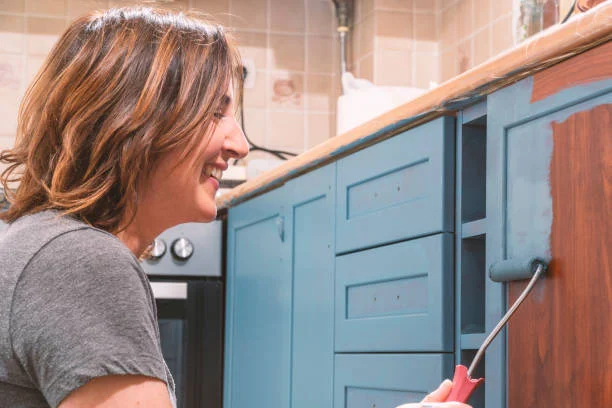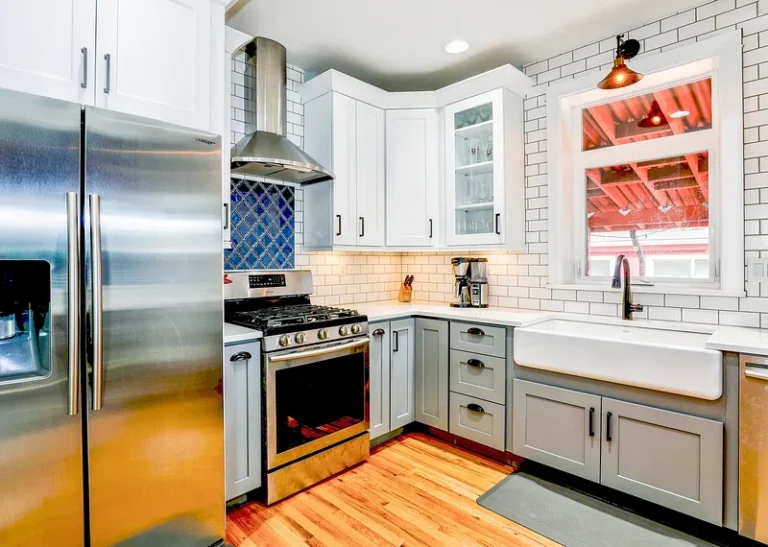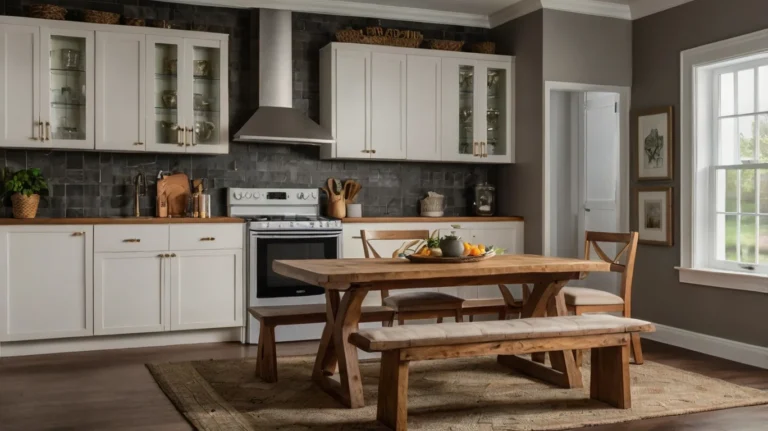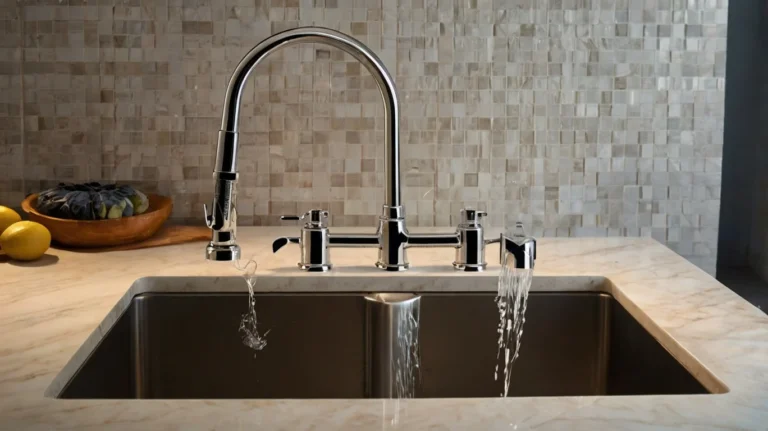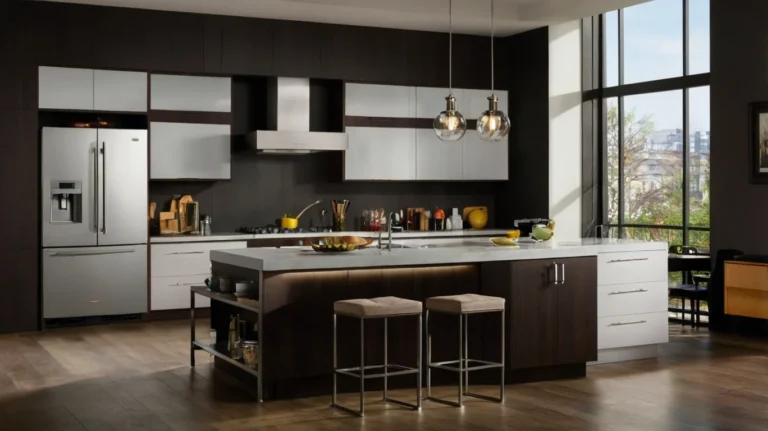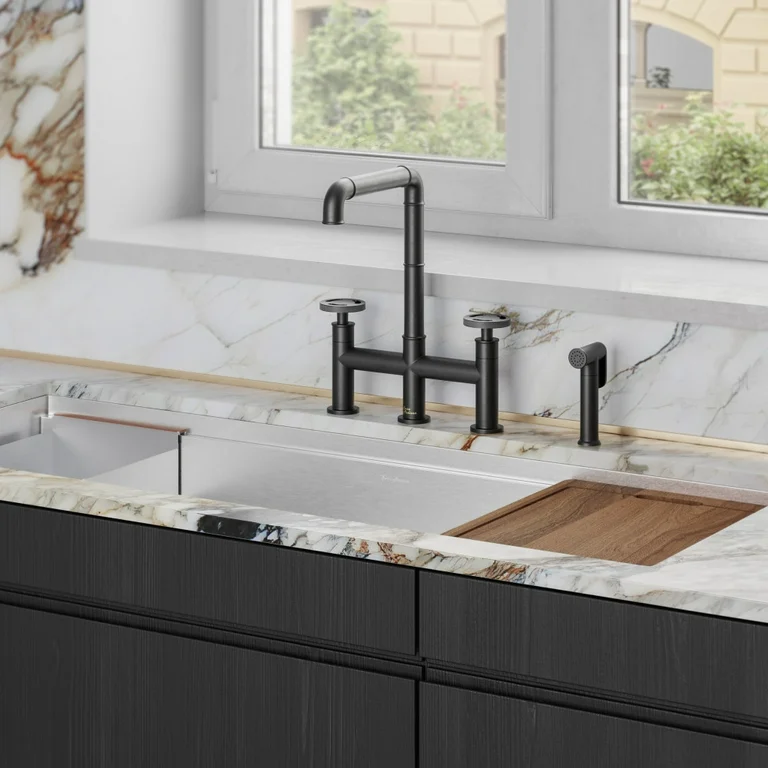How to Build an Outdoor Kitchen with Wood: A Complete Guide

Creating an outdoor kitchen with wood can transform your backyard into a culinary oasis, providing a functional space for cooking, dining, and entertaining. Wood adds a natural aesthetic, making it an attractive option for outdoor kitchens. This guide will take you through the steps to design and build your very own outdoor kitchen using wood.
Table of Contents

1. Planning Your Outdoor Kitchen
Define Your Needs
Before starting your outdoor kitchen project, assess your specific requirements. Will you be using it mainly for weekend barbecues, preparing full meals, or entertaining guests? Understanding your primary usage will help in designing a practical and efficient outdoor space.
Choose a Suitable Location
Selecting the right spot for your outdoor kitchen is essential. Ensure it is close to your home for easy access while also providing enough space for cooking and seating arrangements. Consider environmental factors such as wind direction, sun exposure, and available utilities like water, gas, and electricity to enhance convenience.
Design Your Layout
A well-planned layout is crucial for a functional Outdoor Kitchen with Wood. Include key elements such as a grill, preparation area, storage cabinets, and comfortable seating. Maintain an organized flow to ensure ease of movement between cooking, dining, and socializing zones. Additionally, consider installing weather-resistant materials to enhance durability.
Set a Budget
Establishing a budget is a critical step in the planning process. Factor in costs for materials, appliances, labor, and additional accessories. Having a well-defined budget will prevent overspending and help prioritize necessary components while keeping your project within financial limits.
Select Durable Materials
Outdoor Kitchen with Wood are exposed to varying weather conditions, so choosing durable and weather-resistant materials is vital. Opt for stainless steel appliances, stone or concrete countertops, and weatherproof cabinetry to ensure longevity. Proper material selection will contribute to both functionality and aesthetics.
Install Essential Appliances
The appliances you choose should align with your cooking needs. A high-quality grill is a must-have, but you may also consider adding a smoker, pizza oven, or outdoor refrigerator. Make sure your appliances are suitable for outdoor use and have adequate ventilation.
Incorporate Lighting and Shade

Good lighting enhances safety and ambiance. Install task lighting around cooking areas and ambient lighting for dining and social spaces. Consider adding pergolas, umbrellas, or retractable awnings to provide shade and protect against harsh sunlight or rain.
Plan for Proper Ventilation and Safety
Safety should be a priority in your Outdoor Kitchen with Wood design. Ensure adequate ventilation to prevent smoke buildup and include fire-resistant materials to reduce risks. Additionally, keep a fire extinguisher nearby and install a sturdy, slip-resistant flooring surface to minimize accidents.
Add Personal Touches
Enhance the aesthetics of your outdoor kitchen with decorative elements such as plants, outdoor rugs, or stylish furniture. Customizing the space with your personal style will make it more inviting and enjoyable for family and guests.
By carefully planning and executing these steps, you can create a functional, stylish, and enjoyable outdoor kitchen that meets your cooking and entertainment needs.
2. Gathering Materials and Tools
Materials Needed:
- Wood: Choose weather-resistant wood such as cedar, redwood, or pressure-treated lumber for the frame and countertops.
- Decking Material: For the flooring, consider using composite decking or treated wood.
- Fasteners: Galvanized screws or bolts to prevent rusting.
- Countertop Material: You can use wood or stone for the countertop.
- Grill and Appliances: Outdoor-rated appliances if desired.
Tools Needed:

- Circular Saw: For cutting wood to the necessary sizes.
- Drill: For securing screws and bolts.
- Measuring Tape: To ensure accurate measurements.
- Level: To keep surfaces even.
- Trowel: For any mortar work if using stone.
- Safety Gear: Gloves, goggles, and a dust mask.
3. Preparing the Site
Step 1: Clear the Area
Remove any grass, debris, or existing structures from the chosen site. Ensure the ground is level and free of obstacles that could hinder the installation.
Step 2: Lay the Foundation
If you’re building a raised structure, consider pouring a concrete slab or using pavers as a base to support your outdoor kitchen. Ensure the foundation is solid and level.
4. Building the Frame
Step 1: Construct the Base
- Cut the Wood: Based on your design, cut the wood to appropriate lengths for the base frame.
- Assemble the Base: Lay out the base frame on the foundation. Make sure it is square and level.
- Add Vertical Supports: Attach vertical supports to provide stability for the structure. Use a level to ensure they are vertical.
Step 2: Build Countertops
- Create Countertop Frames: Build frames for the countertops using wood. Ensure they are sturdy enough to support the countertop material.
- Install the Countertop: Attach your chosen countertop material to the frames securely.
5. Installing Utilities and Appliances
Step 1: Run Plumbing and Electrical Lines
If your outdoor kitchen will include a sink or refrigerator, run the necessary plumbing and electrical lines. Consult professionals to ensure that all work complies with local codes and safety standards.
Step 2: Install Appliances
Place any appliances (grills, sinks, refrigerators) into their designated spaces within the kitchen. Ensure that all connections to utilities are secure and compliant.
6. Finishing Touches
Step 1: Add Siding or Cladding
Consider adding siding or cladding to the exterior of your kitchen for protection against the elements and to enhance the overall look. Wood or stone can be excellent choices for cladding.
Step 2: Personalize Your Space

Add personal touches like outdoor furniture, lighting, and decorative elements to create an inviting atmosphere. Consider adding features such as a bar or seating area for entertaining.
7. Maintenance and Care
Maintaining your Outdoor Kitchen with Wood is essential for its longevity. Regularly check for wear and damage, clean surfaces, and treat the wood with sealants or stains to protect it from moisture and UV rays.
Conclusion
Building an outdoor kitchen with wood can be a rewarding project that enhances your outdoor living space. By following this comprehensive guide, you can create a functional and stylish kitchen that will serve as a focal point for gatherings and culinary adventures. Enjoy the process, and look forward to creating lasting memories with family and friends in your new outdoor kitchen!
Here’s a table summarizing the steps to build an outdoor kitchen with wood:
| Step | Description |
|---|---|
| 1. Planning Your Outdoor Kitchen | – Define the primary purpose (grilling, preparing food, entertaining). – Choose a suitable location considering accessibility and sun exposure. – Design the layout, including key features like a grill, countertop, and seating. – Set a budget for materials and appliances. |
| 2. Gathering Materials and Tools | Materials: Weather-resistant wood (cedar, redwood, pressure-treated lumber), decking material, fasteners, countertop material, and appliances. Tools: Circular saw, drill, measuring tape, level, trowel, and safety gear. |
| 3. Preparing the Site | Step 1: Clear the area of grass and debris. Step 2: Lay a solid foundation, such as a concrete slab or pavers, to support the outdoor kitchen. |
| 4. Building the Frame | Step 1: Construct the base frame using cut wood; ensure it is square and level. Step 2: Add vertical supports for stability and build frames for countertops. |
| 5. Installing Utilities and Appliances | Step 1: Run plumbing and electrical lines for sinks and appliances, ensuring compliance with local codes. Step 2: Install appliances in their designated spaces securely. |
| 6. Finishing Touches | Step 1: Add siding or cladding to enhance the kitchen’s look and protect it from the elements. Step 2: Personalize the space with furniture, lighting, and decorative elements. |
| 7. Maintenance and Care | – Regularly inspect for wear and damage. – Clean surfaces and treat the wood with sealants or stains to protect against moisture and UV rays. |
This table provides a concise overview of the essential steps involved in building an outdoor kitchen with wood, making it easier to follow along with the process.
Here are five frequently asked questions (FAQs) about building an outdoor kitchen with wood:
1. What type of wood is best for an outdoor kitchen?
The best types of wood for outdoor kitchens are those that are naturally resistant to moisture and decay, such as cedar, redwood, or pressure-treated lumber. These options can withstand outdoor conditions better than regular wood.
2. Do I need a permit to build an outdoor kitchen?
Whether you need a permit depends on local building codes and regulations. It’s essential to check with your local authorities to determine if permits are required, especially if your kitchen includes plumbing or electrical work.
3. How can I protect the wood in my outdoor kitchen?
To protect the wood, use a high-quality sealant or stain specifically designed for outdoor use. Regularly inspect the wood for signs of wear and reapply sealant or stain as needed to maintain its durability.
4. Can I install appliances like a grill or refrigerator in my outdoor kitchen?
Yes, you can install various appliances in your outdoor kitchen. Ensure they are rated for outdoor use, and follow the manufacturer’s instructions for installation, including proper connections to water and electricity.
5. How do I maintain my outdoor kitchen?
Regular maintenance includes cleaning surfaces, checking for wear or damage, and ensuring all connections are secure. Treat the wood with sealants or stains to protect against moisture and UV exposure, and inspect appliances periodically to ensure they are functioning correctly.

